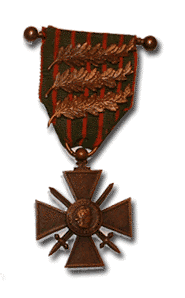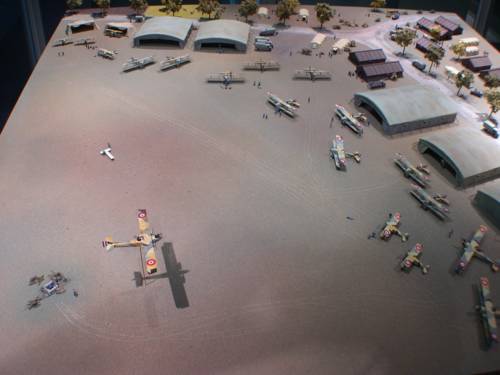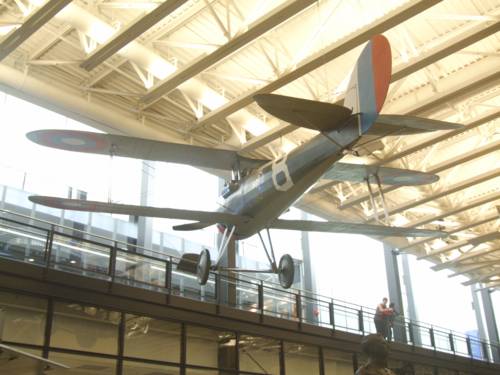United States Air Service
USAS HistorySummary 1917-1918 Lafayette Escadrille
N.124/Spa.124 1st Observation
1st, 12th, 50th, 88th 1st Pursuit Group
27th, 94th, 95th, 147th 1st Bombardment
96th, 11th, 20th 2nd Pursuit Group
13th, 22nd, 49th, 139th 3rd Pursuit Group
28th, 93rd, 103rd, 213th 4th Pursuit Group
17th, 148th, 25th, 141st 5th Pursuit Group
41st, 138th, 638th 3rd Air Park
255th. List of Aces
United States Naval Aviation
US Naval AviationUnited States Marine Corps Aviation
US Marine AviationAircraft
 Nieuport 28
Spad VII
Spad XIII
Fokker Dr.1
Albatros D.Va
Fokker D.VII
Nieuport 28
Spad VII
Spad XIII
Fokker Dr.1
Albatros D.Va
Fokker D.VII
Website: Atlanta SEO
E-mail us

Saints, France
Saints and Mauperthuis
Most of the quotes below are from http://www.1stfighter.org/history/1918.html compiled by SSgt John DesHetler, 1st Fighter Wing History Office at the Langley AFB, in Langley Virginia cites the following related to our town of Saints just a month after having relocated from Toul to Touquin which had been completed by June 8, 1918:
July 8, 1918:
"27th - Squadron moved from Touquin to Saints to establish a new airdrome."
"94th - Squadron moved nearer the lines to airdrome at Saints. 95th - Squadron moved nearer the lines to airdrome at Saints." The date given for the move is July 9th, 1918. The same day "27th - In their first patrol from the new airdrome at Saints, a twelve plane flight had no combats." The 147th Squadron arrived the same day. And finally for the same day, "Captain Philip J. Roosevelt transferred to Air Service, First Brigade. Group assigned temporarily to VIth French Army."
Captain Philip J. Roosevelt was a cousin of Quentin Roosevelt and was responsible for filing reports about the operations of the 1st Pursuit Group.
So this confirms that Roosevelt was in Saints at the time and thus Mauperthuis and everything else falls into place. But why did the Americans move from Touquin to Saints, which was only a few kilometers further away. The move to Saints was necessary, as Eddie Rickenbacker writes:
It was at this period of the American offensive, it will be remembered, that the final German retreat began at Chateau-Thierry. Our aerodrome at Touquin was located so far behind the lines that we were limited to very short patrols over enemy territory. As the Hun continued to withdraw farther and farther back it was evident that we must abandon our magnificent chateau at Touquin and move nearer the front. Every day the German Rumplers came over our field and blandly photographed us while our Archy batteries poured up a frantic lot of useless shells. I doubt if the enemy remained in ignorance of our change of location a single day. For as soon as we began settling at the Saints aerodrome a few miles nearer the lines, we again noticed the visits of the high-flying Rumplers .
One source writes that Rickenbacker's 26 victories were "during a period of only two-and-a-half months-from April 29 to May 30, and from September 14 to October 30. The balance of the time he spent in the hospital recuperating from a serious mastoid operation." Yet Rickenbacker himself writes that he received his Spad on July 31st and that he had six confirmed kills during the time he was in Saints including three Fokkers, a Halberstadt, followed by another Fokker and finally a balloon. These kills took place in rapid succession over two weeks from 9/14/1918 to 9/28/1918.
Saints is a small community. Now it numbers a few over 1,100. As recently as the 1960s, the population was about 650. During the war, the population must have been this or lower. But still, that would have been bigger than Mauperthuis which today only has 450 inhabitants. Thus there must have been more homes in Saints than in Mauperthuis. So why were the American aviators billeted in Mauperthuis rather than in Saints? Perhaps because Mauperthuis was famous thanks to Alexandre Dumas' "The Three Musketeers" and that local historians there have actually traced five musketeers to the little village. Anne-Pierre de Montesquieu was the marquis of the village and also of Coulommiers up to the French Revolution.
And why were they billeted in homes rather than in barracks or tents in the field? This question is easier to answer. The homes were already there and warmer and more solid than tents. Since the homes were there, there would have been no need to construct barracks, especially since no one knew how long the pilots would be in any given place.
On July 10, 1918
"Air Park No. I - Established as Mobile Park No. 1, Six Kilometers West of Coulommiers."

Model of aerodrome. Saints was probably similar in layout.

Model of aerodrome. Saints was probably similar in layout.

Nieuport 28
The airfield was located in what is now a field on the north side of town, due north of the church and due east of the Hotel de Ville of Saints. The land was owned by the Montesquieu Family in days past. Today Mr. Luc De Groot owns the farm which was once the home of the Aerodrome.
In July in this part of France, the days get very long - the sun rising earlier than most people get up and not fully setting until nearly 11 pm. These long days meant even more combat, for as long as there was daylight, planes needed to be up in the air to either take photos for reconnaissance or to prevent the other side from doing likewise.
The melees were chaotic and quickly turned into a tangled ball of movements. What would often happen is a flight of five or six aircraft from one side would engage a similar number of opponents. Aircraft from both sides would see this beginning engagement and rush to jump in creating a larger dogfight of 50 or more fighters.
Jim Knowles was shot down and mourned by Mauperthuis' Miss Malgras, the blacksmith's daughter.
Granville was elected to pack his effects and to console and stifle the sobs of the blacksmith's daughter who was distraught with sorrow. "Si brave, si gentil," she wailed. Charlie has just divided the most popular of Jim's belongings . . . the blacksmith's family was beginning to get dry-eyed again, when the prodigal son returned. . .
And so these young men who were going up in the air were so tremendously brave. Quentin Roosevelt described Saints and Mauperthuis:
July 11, 1918
"There's lots doing in this sector. We lost another fellow from our squadron three days ago. However, you get lots of excitement to make up for it, and nearly every patrol we run into some of them. We've moved again, this time only ten kilometers. It's a much smaller field than the other, but it's nearer the front by those ten kilometers, and the other was really too big for us. Also, I like my quarters much better. I'm billeted in a little French town near the field. I room with Ed Thomas, our transportation officer, in a delightful room. It's in one of those white, plaster houses with tile roofs that sag in between the rafters, and an impossible weather cock on the chimney that doesn't work as there's a sparrow's nest in between its legs. The room is on the ground floor, - with a window on each side, one where you can watch everything that's going on in the street, and the other looking out on a garden that's all in bloom. It's spotlessly clean, with red tiled floor, and a huge grandfather's clock ticking solemnly in the corner.
The old lady who owns the house is equally delightful. She's a little bit of a dried up person, at least as old as the hills, with gold rimmed spectacles, the red cheeks that all these country folk have, and a beard that even - might be proud of. At first she regarded me with deep suspicion, but I've now succeeded in winning her over. She thawed a little when she found I talked French - but the thing that won her over completely was her dog. When I first came in I was greeted with furious barkings and growling. By a strong mental effort I succeeded in showing no outward and visible signs of my inward and spiritual doubt, and walked on past him. That night as I was sitting reading the old lady appeared and with her the dog, who solemnly advanced, wagged his tail, and then put his head on my knee to be patted. After that the old lady and I became fast friends and now I am Monsieur Quentin and a privileged person. Among other things she told me that she had had German officers quartered in her house in 1870 and then again in 1914. Think of it."
The field is the one in Saints and the "little town near the field" is Mauperthuis, which is, in fact, just down the street about half a mile from Saints.
On July 12th, the entry in www.1stfighter.org reads:
"95th - 1st Lieutenant Quentin T. Roosevelt destroyed Fokker near Chateau-Thierry (confirmed)."
July 13, 1918
12 more Spad XIIIs were delivered to Saints. The remaining three squadrons will receive Spad XIIIs from the middle of June until the middle of August to replace their Nieuports.
And finally the poignant, sad entry about Quentin Roosevelt on July 14th stating
"95th - 1st Lieutenant Quentin T. Roosevelt shot down in flames near Chateau-Thierry by Sergeant Thorr of the Richtofen Circus".
July 20, 1918:
"Hotel Du Saints Du Progress in Saints declared off limits for members of the Group following several fights in which personnel of the Group were badly manhandled by other enlisted men and officers. Commendation received from VIth French Army reads, 'Le Commandant Gerard VIth Armee requests that his compliments and thanks be extended Major Atkinson and his pilots for the very excellent performance of the First Pursuit Group during the last attack.'"
August 26, 1918:
"A board of officers was appointed to investigate and report upon the circumstances surrounding the disappearance of wine and other eatables from the property of M. Harrotte of Saints, supposedly by members of the First Pursuit Group. The Board found that no members of the First Pursuit Group were involved in the robbery."
The squadrons would remain in Saints until the start of September. Then on September 1st, they relocated east once again, this time to Rembercourt, a bit east of Verdun and about 35 kilometers due north of Toul.
September 1, 1918:
"27th - Departed Saints by truck and train for Rembercourt to rejoin 1st Groupe. [95th ] departed Saints by truck convoy to join Group at Rembercourt."
According to Gorrell's, it was in doing so that the 1st Pursuit Group severed from the French 6th Army and became a part of the 1st American Army.
September 4, 1918:
"218th - The squadron which had remained behind at Saints for the purpose of closing the airdrome, proceeded to Rembercourt, by truck convoy."
Several other entries humanize the war:
Over in France, after delays and problems, squadrons like the 95th, which had a kicking mule as its insignia (Maude the Mule, from the comic strip by cartoonist Fred Opper), were formed. They had a song in the 95th, "Hurrah for the Next Man to Die," and for a victory in the air, the winner had to treat the company: downing an enemy plane rated five bottles of champagne; getting downed yourself, three bottles; cracking up on landing, one bottle. That and learning to say "Mercy boo-coo" and "yin rouge," and a few direct questions were the first lessons. Wrote one flier home, "It's fine to hear the French girls yelling Vivent les Americains! Vive Pershing! Vivent les Etats-Unis!"
A medical staff dental officer sent the boys off with the proper advice: "Men, I'm about to address you for the last time. I want you to promise me-in fact I'm putting you on your honor-you will keep your teeth clean . . . You are to brush your teeth night and morning like this . . . up and down, not sideways!"
And a few others that are just poignant:
"27th - Patrol of twenty planes to protect photographic ship of Ninety-first Aero Squadron. First Lieutenant Harry Harkins crashed on aerodrome at Saints and seriously injured, taken to Evacuation Hospital No. 7. Patrol report of Lieutenant Dawson for the day, 'While leading patrol observed five allied bombers coming out of Germany with nine Fokkers attacking them at about 9:10, at an altitude of about 3, 000 meters. When the bombers reached the lines the Fokkers turned back and began maneuvering at a high altitude leaving long white trails of smoke in their wake, seemingly able to shut the trail off at will. Saw one make the figure 8 and the letter D' They returned in formation into Germany.' "
And finally, the First Fighter Group - direct descendant of the Lafayette Escadrille, the 94th Aero Squadron and 95th Aero Squadron and the other units that operated in Saints - has gone from operating French made Spads and Nieuports to operating the most advanced combat aircraft in the world - the American made Lockheed F22 Raptor made just about five miles from where I live now. That's one of those beautiful full circles.
Learn more about the United States Air Service's 1st Pursuit Group:
Toul, Touquin,
Saints and Mauperthuis and Rembercourt,
"American Eagles" - 345 page illustrated history of US Combat Aviation in World War I
Events/Airshows
 Events/Airshows
Events/Airshows
Pilots/Aviators
 Raoul Lufbery
Raoul LufberyAce of Aces Eddie Rickenbacker
26 victories Quentin Roosevelt
Son of President KIA Frank Luke
18 victories in 17 days Eugene Bullard
1st African Am. Pilot David Ingalls
1st US Navy Ace List of USAS Pilots
Find a Relative American WWI Pilots
Mini bios
USAS Research
 USAS Videos
Reading List
USAS Videos
Reading ListWWI US Aviation Related Links
WWI US Aviation Credits War Wings
by Phillip W. Stewart WWI Maps
Units & Airfields Payne Field
USAS Aerodromes now... USAS Archives
Questions? Need Help? American Expeditionary Forces
WWI Doughboys in France